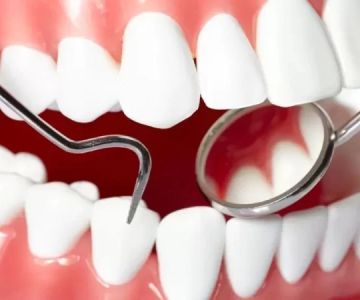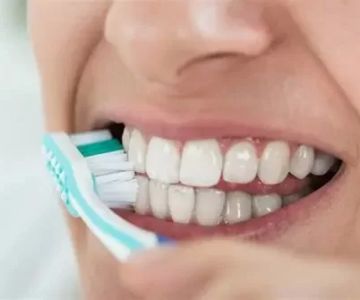How to Brush Your Teeth Properly to Prevent Cavities
Brushing your teeth may seem like a mundane task, but it plays an essential role in maintaining our oral health. In the United States, tooth decay (caries) is one of the most prevalent chronic diseases among both children and adults. According to the Centers for Disease Control and Prevention (CDC), more than 26% of adults aged 20 to 64 have untreated tooth decay. This staggering statistic underscores the importance of proper oral hygiene practices, particularly tooth brushing. Understanding the right techniques, frequency, and tools can help you prevent cavities and enjoy a healthier smile. In this article, we will explore how to brush your teeth effectively, discuss common mistakes, and provide actionable tips to improve your routine.
Understanding the Role of Fluoride Toothpaste
Using fluoride toothpaste is crucial for cavity prevention. Fluoride is a mineral that helps rebuild weakened tooth enamel and can even reverse early signs of tooth decay. Studies have shown that fluoride can reduce cavity rates by up to 40% when used as part of a regular brushing routine. Choose a toothpaste with fluoride that meets the American Dental Association (ADA) Seal of Acceptance. However, it's important to note that children under the age of six should use a pea-sized amount of fluoride toothpaste to avoid any risk of dental fluorosis.
The Correct Brushing Technique
Applying the proper brushing technique can dramatically impact your oral health. The ADA recommends the following method for effective tooth brushing:
- Positioning: Hold your toothbrush at a 45-degree angle to your gums.
- Movement: Use short, gentle strokes, moving the brush back and forth across the outer surfaces of your teeth.
- Inward and Outward: This technique should be applied to the inside surfaces and the biting surfaces as well.
- Duration: Brush for at least two minutes, ensuring that all surfaces of your teeth are cleaned.
Following this technique not only helps in thoroughly cleaning your teeth but also massages the gums, which aids in maintaining their health.
Timing and Frequency of Brushing
Consistency is key in oral hygiene. The ADA recommends brushing your teeth at least twice a day—once in the morning and once before bed. Each brushing session should last at least two minutes. If you consume sugary or acidic foods, consider brushing afterward to remove harmful residues that could lead to cavities. However, if you have just consumed acidic foods or drinks, it's advisable to wait at least 30 minutes before brushing to avoid damaging your enamel.
Choosing the Right Toothbrush
Your choice of toothbrush can significantly affect your oral care routine. A toothbrush with soft bristles is recommended for most people, as it is gentle on gums yet effective at removing plaque. Electric toothbrushes can also be beneficial, as they tend to provide more consistent brushing motion and can make it easier to achieve the appropriate duration. Make sure to replace your toothbrush every three to four months, or sooner if the bristles are frayed.
Importance of Regular Dental Visits
While brushing is essential, it should be complemented with regular dental check-ups. The American Dental Association recommends seeing a dentist at least twice a year for preventive care. These visits not only help in detecting cavities early but also allow your hygienist to professionally clean your teeth and provide personalized advice for your oral care routine. If you have a history of cavities, your dentist may recommend additional measures, such as sealants or increased fluoride treatments.
Encouraging Healthy Habits Beyond Brushing
Building a comprehensive oral hygiene routine goes beyond just brushing your teeth. Incorporate the following habits for optimal oral health:
- Flossing Daily: Use dental floss to clean between your teeth where the toothbrush may not reach.
- Mouthwash: Implement an antimicrobial mouthwash into your routine to reduce plaque and bacteria.
- Healthy Diet: Limit sugary snacks and drinks, opting instead for fruits and vegetables that can help produce saliva, which naturally protects against cavities.
By adopting these habits alongside proper brushing techniques, you are setting yourself up for success in preventing cavities and maintaining overall oral health.
Conclusion: Taking Action for Your Oral Health
In summary, brushing your teeth properly is a vital component in preventing cavities and maintaining optimal oral health. Remember to use a fluoride toothpaste, apply the correct brushing technique, and be consistent with the frequency of brushing. Choose the right toothbrush and don't skip those important dental visits. Finally, complement your brushing with additional healthy habits such as flossing and maintaining a balanced diet.
By taking these actionable steps, you not only protect your teeth from cavities but also invest in your overall health. For more tips on oral hygiene, visit Dentistry Toothtruth and empower yourself with the knowledge needed for a healthy, beautiful smile.







 Elite Dentistry - Mehran Rastegar Lari D.D.S.5.0 (6 review)
Elite Dentistry - Mehran Rastegar Lari D.D.S.5.0 (6 review) UI Health Mile Square Health Center - Primary and Immediate Care3.0 (13 review)
UI Health Mile Square Health Center - Primary and Immediate Care3.0 (13 review) OC Centers for Oral Surgery & Dental Implants - San Clemente5.0 (199 review)
OC Centers for Oral Surgery & Dental Implants - San Clemente5.0 (199 review) Greencastle Dental4.0 (653 review)
Greencastle Dental4.0 (653 review) Frank A. Madalone, DMD, PC5.0 (9 review)
Frank A. Madalone, DMD, PC5.0 (9 review) Newtown Family Dentistry4.0 (361 review)
Newtown Family Dentistry4.0 (361 review) The Importance of Oral Health Education During Pregnancy for a Healthy Pregnancy
The Importance of Oral Health Education During Pregnancy for a Healthy Pregnancy Best Tips for Brushing Your Teeth Properly for Healthy Gums: Essential Techniques for Oral Health
Best Tips for Brushing Your Teeth Properly for Healthy Gums: Essential Techniques for Oral Health Why Skipping Dental Checkups Can Lead to Bigger Oral Health Problems
Why Skipping Dental Checkups Can Lead to Bigger Oral Health Problems Advantages of Porcelain Dental Restorations
Advantages of Porcelain Dental Restorations How Can Diabetes Cause Tooth and Gum Problems? Preventing and Managing Oral Health Issues
How Can Diabetes Cause Tooth and Gum Problems? Preventing and Managing Oral Health Issues Healthy Habits for Promoting Good Oral Health and Hygiene: Tips for a Healthy Smile
Healthy Habits for Promoting Good Oral Health and Hygiene: Tips for a Healthy Smile